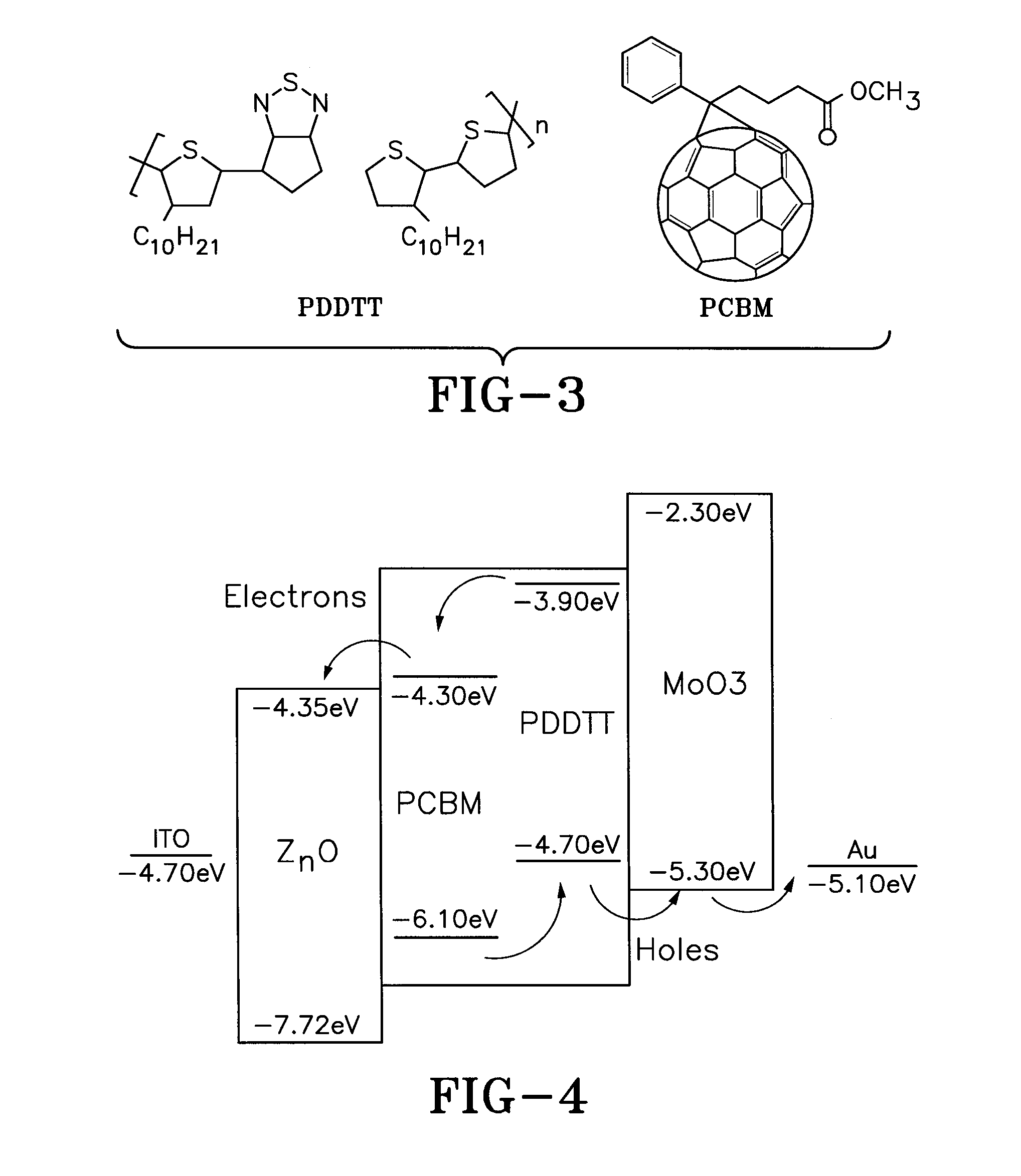Broadband Polymer Photodetectors Using Zinc Oxide Nanowire as an Electron-Transporting Layer
a technology of zinc oxide nanowires and polymer photodetectors, which is applied in the field of high-performance broadband polymer photodetectors, can solve the problems of contaminating the pedot:pss polymer, degrading the performance of the device formed by such process, and the photodetector device formed of such materials does not achieve a stable, long-term operating li
- Summary
- Abstract
- Description
- Claims
- Application Information
AI Technical Summary
Benefits of technology
Problems solved by technology
Method used
Image
Examples
Embodiment Construction
[0017]The present invention comprises a photodetector generally referred to by the numeral 10 as shown in FIG. 1 of the drawings. Specifically, the photodetector 10 includes an inverted structure, that includes an at least partially light transparent cathode 20, such as an indium-tin-oxide (ITO) having a gold (Au) contact 22 disposed thereon. The cathode 20 is separated from an anode 30 that is formed of high work-function metal, such as a silver or gold by an active layer 40. Specifically, the active layer 40 is formed of one or more small or narrow bandgap conjugated polymers, such as a mixture or composite of poly(5,7-bis(4-decanyl-2-thienyl)-thieno(3,4-b)diathiazole-thiophene-2,5) (PDDTT) and (6,6)-phenyl-C61-butyric acid methyl ester (PCBM). Thus, the active layer 40 may be formed of a composite of one or more conjugated polymers, as the electron donors, and and one or more organic molecules, such as fullerene, as an electron acceptor. The active layer 40 is disposed upon a cat...
PUM
| Property | Measurement | Unit |
|---|---|---|
| Solubility (mass) | aaaaa | aaaaa |
| Transparency | aaaaa | aaaaa |
| Detectivity | aaaaa | aaaaa |
Abstract
Description
Claims
Application Information
 Login to View More
Login to View More - R&D
- Intellectual Property
- Life Sciences
- Materials
- Tech Scout
- Unparalleled Data Quality
- Higher Quality Content
- 60% Fewer Hallucinations
Browse by: Latest US Patents, China's latest patents, Technical Efficacy Thesaurus, Application Domain, Technology Topic, Popular Technical Reports.
© 2025 PatSnap. All rights reserved.Legal|Privacy policy|Modern Slavery Act Transparency Statement|Sitemap|About US| Contact US: help@patsnap.com



